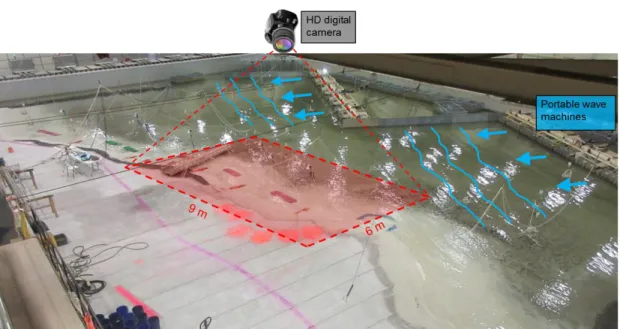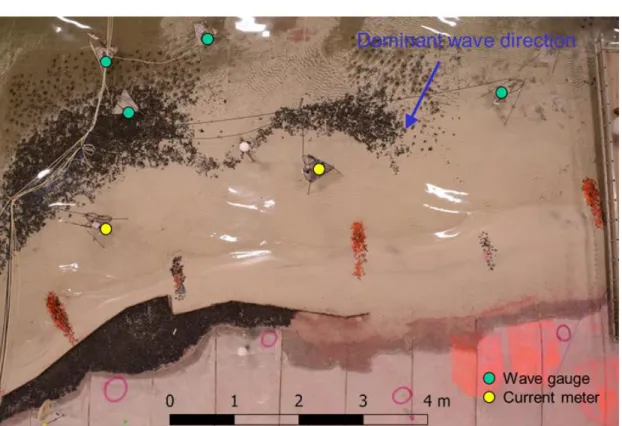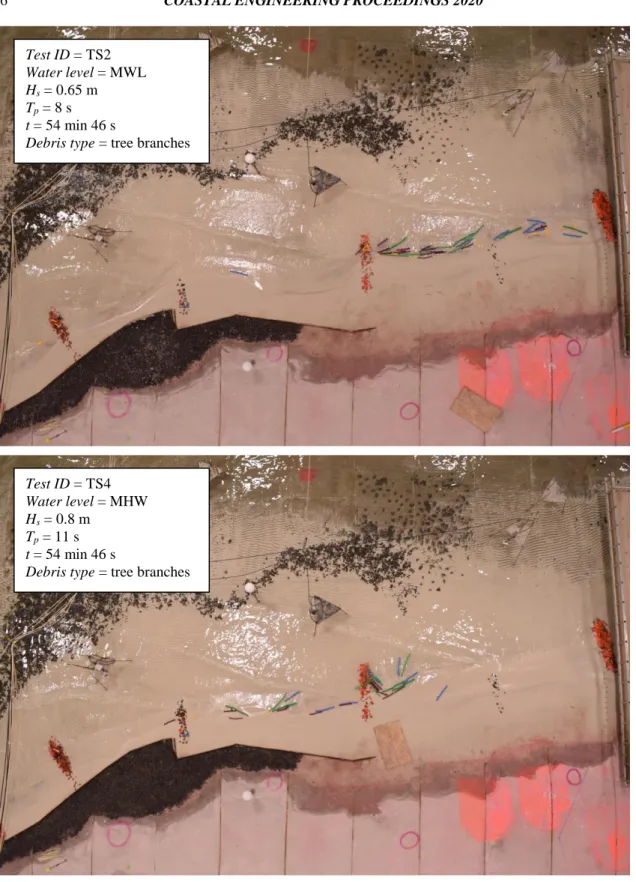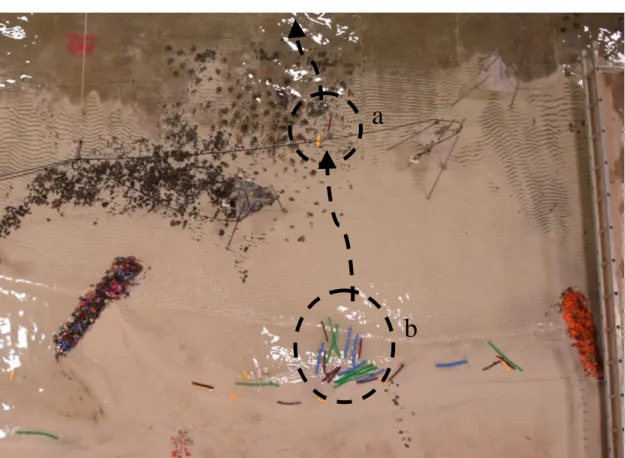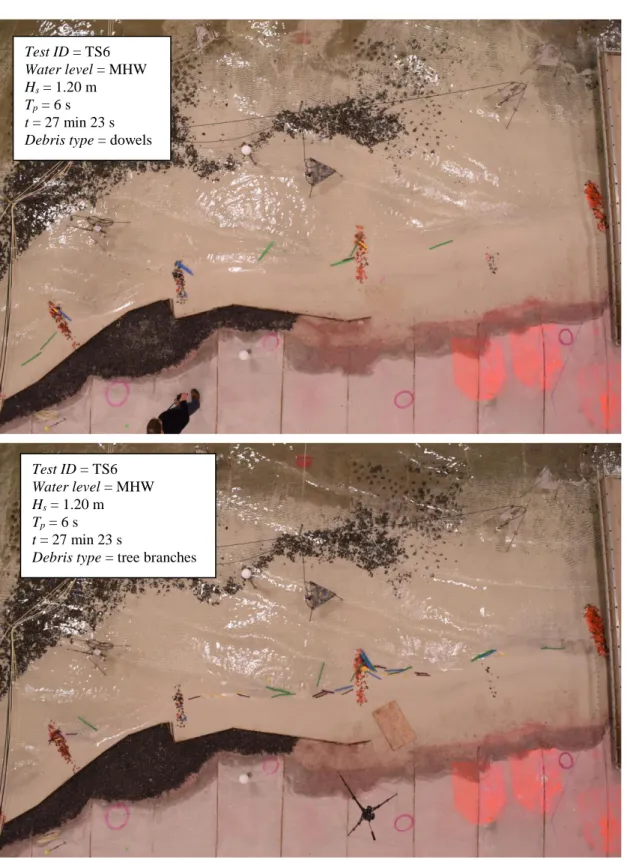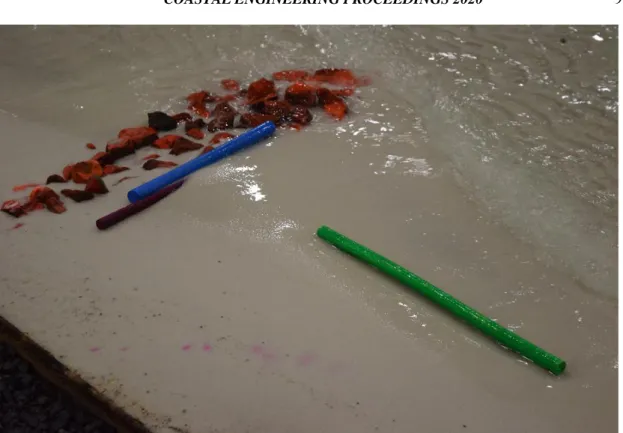Publisher’s version / Version de l'éditeur:
Vous avez des questions? Nous pouvons vous aider. Pour communiquer directement avec un auteur, consultez la première page de la revue dans laquelle son article a été publié afin de trouver ses coordonnées. Si vous n’arrivez pas à les repérer, communiquez avec nous à PublicationsArchive-ArchivesPublications@nrc-cnrc.gc.ca.
Questions? Contact the NRC Publications Archive team at
PublicationsArchive-ArchivesPublications@nrc-cnrc.gc.ca. If you wish to email the authors directly, please see the first page of the publication for their contact information.
https://publications-cnrc.canada.ca/fra/droits
L’accès à ce site Web et l’utilisation de son contenu sont assujettis aux conditions présentées dans le site LISEZ CES CONDITIONS ATTENTIVEMENT AVANT D’UTILISER CE SITE WEB.
Coastal Engineering Proceedings, 36v, pp. 1-11, 2020-12-31
READ THESE TERMS AND CONDITIONS CAREFULLY BEFORE USING THIS WEBSITE. https://nrc-publications.canada.ca/eng/copyright
NRC Publications Archive Record / Notice des Archives des publications du CNRC :
https://nrc-publications.canada.ca/eng/view/object/?id=0f839daf-489f-4fab-bb96-daa01373ddc7
https://publications-cnrc.canada.ca/fra/voir/objet/?id=0f839daf-489f-4fab-bb96-daa01373ddc7
NRC Publications Archive
Archives des publications du CNRC
This publication could be one of several versions: author’s original, accepted manuscript or the publisher’s version. / La version de cette publication peut être l’une des suivantes : la version prépublication de l’auteur, la version acceptée du manuscrit ou la version de l’éditeur.
For the publisher’s version, please access the DOI link below./ Pour consulter la version de l’éditeur, utilisez le lien DOI ci-dessous.
https://doi.org/10.9753/icce.v36v.papers.1
Access and use of this website and the material on it are subject to the Terms and Conditions set forth at
Modelling transport and fate of woody debris in coastal waters
Murphy, Enda; Cornett, Andrew; Nistor, Ioan; Baker, Scott
1
Enda Murphy1,2, Andrew Cornett1,2, Ioan Nistor2, and Scott Baker1
Woody debris is ubiquitous in coastal waters, and on shorelines proximate to forested regions. Logs and driftwood play a vital role in coastal and global ecosystems, and can provide valuable data to support studies of oceanography, geomorphology, ecology, history and archaeology. There is growing interest in the role that woody debris can play in nature-based coastal engineering solutions. However, large quantities of woody debris in coastal waters can pose significant hazards to communities, infrastructure, navigation and ecosystems. Thus, the changing abundance and distribution of coastal driftwood, driven by factors including human activities and climate change, has potential for both positive and negative consequences. A better understanding of coastal driftwood fate and transport processes is needed to inform management practices, uses, and sustainable ecosystem management. To date, research on physical transport of woody debris, has been concentrated on tsunami and inland (riverine) environments, where spatiotemporal scales and driving processes are significantly different from typical climatic or even extreme (storm) conditions in coastal waters. In this paper, we describe a series of scale physical model experiments, conducted to provide insight to debris transport processes in coastal waters under a range of controlled wave and water level conditions. The experiments were conducted in a 50.4-metre by 29.4-metre wave basin, in which a 1/30 scale model of a natural shoreline comprised of a shallow fringing reef, a sandy shoreline, and several small coastal structures (groynes and breakwaters) was constructed. Wooden dowels and tree branches, scaled to replicate the size distribution of woody debris observed on Pacific Northwest shorelines, were released in the model. Despite some limitations (e.g., model scale effects), the experimental test results provided several valuable insights to factors affecting debris mobility in coastal areas. The results will inform the parameterization of important physical processes in a numerical model being developed to predict the fate and transport of woody debris in coastal waters.
Keywords: woody debris; driftwood; physical modelling; littoral drift; wave drift forces.
INTRODUCTION
Woody debris is abundant in coastal waters and on shorelines around the world (Thiel and Gutow 2005). Logs and driftwood play a vital role in coastal and global ecosystems, providing habitat, structure, nutrients, and carbon storage (Gonor et al. 1988, Kennedy and Woods 2012, Grilliot 2019). Driftwood is of interest to researchers in a variety of fields, providing data to support studies of oceanography, geomorphology, ecology and human occupation (Steelandt et al. 2015). The distribution of driftwood on shorelines can provide insight to historical water levels at sites where gauged records do not exist, or are discontinuous (Harper at al. 1988, Kim et al. 2020). Driftwood has traditionally been used for firewood, tools and construction (Lepofsky et al. 2003, Alix 2005). Recently, there has been renewed interest in driftwood and logs for use in sustainable energy supply (Bartocci et al. 2017) and as components of nature-based shore protection schemes (Wilson et al. 2020).
Driftwood can have also negative impacts on ecosystems and human activities in coastal zones, particularly when present in excessive quantities. Debris accumulations near log booming grounds have been known to smother benthic ecosystems, reduce biodiversity, reduce photosynthesis in submerged aquatic vegetation, leach toxic compounds, and de-oxygenate coastal waters (Edgell and Ross 1983). As agents of dispersion, floating debris can contribute to the the spread of invasive species (Convey et al. 2002). Driftwood often poses a significant hazard in coastal waters, impacting navigation (Doong et al. 2011), causing damage to boats and structures during storm or tsunami events (Nistor et al. 2017, Edgell and Ross 1983). The societal cost of managing these risks is significant (Edgell and Ross 1983, Bartocci et al. 2017, Doong et al. 2011).
The abundance and distribution of coastal driftwood is dynamic in response to a variety of drivers including climate change, and human activity (Kramer 2016). An improved understanding of woody debris behaviour in coastal areas is needed to inform management practices and achieve a sustainable balance in terms of maximizing the environmental benefits of woody debris, while appropriately managing risk.
OVERVIEW OF WOODY DEBRIS TRANSPORT PROCESSES IN COASTAL WATERS
Most published literature concerning woody debris transport is focused on tsunami events or riverine environments. In coastal environments, waves can play an important role in driving transport
1 Ocean, Coastal & River Engineering Research Centre, National Research Council Canada, Ottawa, Ontario, Canada
processes and interactions with the shore. Coastal driftwood can become “beached” or stranded on the shore, as a result of wave action and water level fluctuations. Debris deposited at higher elevations has a lower probability of being remobilized by subsequent high water level or wave events, or associated erosion (Thiel and Gutow 2005). Woody debris can progressively trap sediment and become partially or completely buried (Heathfield and Walker 2011, Eamer and Walker 2010, Kennedy and Woods 2012, Grilliot 2019), unless remobilized or washed off by extreme events.
In addition to ambient drivers (waves, currents, wind, ice), the physical characteristics of woody debris influence transport rates and processes. Time-dependent buoyancy is a major factor determining the capacity for driftwood transport (Häggblom 1982, Alix 2005, Kramer 2016), and is largely controlled by wood taxa (which determines volume and specific gravity), wetting/drying history, and degradation. Field and laboratory studies of woody debris transport in rivers identify debris length as a key predictor of mobility (Wohl and Goode 2008, Bocchiola et al. 2008, Davidson et al. 2015). However, field studies are biased towards small river channels, where longer pieces exceed the channel width (Braudrick and Grant 2000). Debris morphology, i.e., the presence or absence of root systems (or bark and other irregularities), can affect the fate and transport of woody debris by influencing buoyancy/draft (Braudrick and Grant 2000) and interactions with shorelines or other debris. Morphology varies substantially by region. Driftwood on Arctic coastlines is smoother (more degraded) than on Pacific coasts of North America, owing to the relatively large distances travelled by debris from the boreal forest treeline via rivers and ice to the Arctic Ocean (Alix 2005, Steelandt et al. 2015).
EXPERIMENTAL METHODS Coastal Model
Experiments were conducted in a 50.4 m by 29.4 m indoor basin at the National Research Council Canada’s Ocean, Coastal and River Engineering Research Centre in Ottawa, Canada (Fig. 1). The basin was equipped with two banks of portable wave machines, capable of generating irregular, long-crested waves with heights of up to 0.14 m (model scale). The study made use of an existing, geometrically undistorted, Froude-scaled, mobile-bed coastal shoreline and nearshore bathymetry built to a geometric scale of 1/30. The model represented an approximately 900 m-long prototype coastal reach, comprising narrow, sandy beaches with rubble mound structures (groynes), and subtidal, fringing coral reefs. The tidal range is approximately 0.6 m and the offshore wave climate is dominated by swell with wave heights of up to about 1.75 m and periods of up to 16 s. The mobile-bed portion of the model covered the beach areas, extending seaward to seabed elevations of approximately -2.4 m Mean Sea Level (MSL). The mobile-bed material consisted of silica sand with a median diameter of 0.166 mm (model scale), scaled to achieve similar fall velocities to the prototype beach sand (median diameter of approximately 0.39 mm). The fixed-bed portion of the model, extending seaward of the -2.4 m MSL contour, consisted of a 5 cm thick skin of concrete grout on top of a bed of compacted fine gravel. In some areas, the concrete surface was roughened using a coarse broom to simulate the texture of the coral reef. Stones and gravel were also embedded in the wet concrete surface to simulate coral outcrops. Rubble-mound structures (groynes and breakwaters) were constructed using limestone with a unit weight of approximately 2,650 kg/m3, scaled to faithfully represent the stability of the prototype 2- to 4-tonne rock under wave action. A correction to Froude scaling principles, based on the Hudson formula, was used to adjust the size of the rock used in the model to account for the use of freshwater in the model.
Model Debris
Model woody debris was scaled to approximately match the size distributions (length and diameter) of large woody debris observed on sandy beaches at Ediz Hook, Washington, United States (Ian Miller, personal communication). Two types of model debris were used: smooth, cylindrical wooden dowels, and approximately cylindrical but irregularly-shaped deciduous tree branches. The average density of the debris pieces, measured soon after completion of all testing, was 686 kg/m3 and 774 kg/m3 for the dowels and branches, respectively. Four discrete size classes of debris were defined based on their length, L. The model debris was spray-painted distinctive colours by size class (Fig. 2), to facilitate optical tracking (not described in this paper) and to observe differences in behavior. The four size classes (and associated paint colours) were L = 100 mm (yellow), 200 mm (maroon), 300 mm (blue) and 400 mm (green).
Figure 1. Overview of the 1:30 scale coastal model and experimental setup.
Figure 2. Model woody debris: dowels (left) and tree branches (right).
Instrumentation
A Nikon D5300 high-definition (HD) digital camera with a 35 mm lens was mounted on a gantry approximately 9 m above the basin, in a downward-looking position (Fig. 1). The camera was configured to automatically record HD images (6000 x 4000 pixels) at capture frequencies between 0.3 and 1.0 Hz, when triggered remotely. The camera field of view covered a portion of the model coast and nearshore area approximately 9 m long by 6 m wide (270 m by 180 m at prototype scale).
Waves were measured in the model using an array of capacitance-wire wave probes, sampling at 50 Hz (model scale). Four of the probes were located within the field of view of the downward-looking HD camera (Fig. 3). Orbital velocities and wave-induced currents in two dimensions (u and v) were measured using two electromagnetic current meters, also sampling at 50 Hz (model scale). The wave and current data were post-processed and analyzed using the GEDAPTM software package (Miles 1990). The current meter records were analyzed to resolve the speed and direction of the low-frequency (wave-induced current) and high-frequency (orbital velocities) components of the flow at each sensor. The low-frequency part of each signal was isolated by low-pass filtering with a cut-off frequency of 1/30 Hz (full scale). Circulation patterns along the shoreline and in the vicinity of the various structures were also qualitatively assessed by observing plumes of coloured dye injected into the model.
Figure 3. Locations of wave probes and current meters.
Test Program and Procedures
The experimental test procedure involved releasing the debris on the water surface at the updrift end of the HD camera field of view (i.e., on the right hand side of Fig. 3), to approximate an instantaneous point release. The movement of the debris in response to waves at various water levels in the basin, and interactions with the shore and structures, was observed. Debris was released only after at least 10 waves had reached the beaches, to allow time for wave-driven circulation to develop. Tests were conducted for eight different sea state and water level combinations, as shown in Table 1. All waves approached the shoreline obliquely, at an angle of approximately 30° to the shore normal. For each sea state and water level combination, 8 debris release experiments (realizations) were conducted. The duration of each experiment was at least 2 hours (prototype time scale), or until all debris had passed through the camera field of view, whichever the shorter. Between each realization in the 8-member ensemble, any debris retained on the beaches or structures was removed using a long-armed grabber tool to avoid disturbing the silica sand or stones. After the last realization of each test ensemble, any debris remaining trapped on the beaches or rubble mound structures was left in place, and subsequently exposed to a different set of wave and water level conditions to investigate the potential for remobilization.
Table 1. Test water levels and sea states (full scale)
Test ID Water Level Significant Wave Height, Hs (m) Peak Wave Period, Tp (s)
TS1 MWL 0.35 8 TS2 MWL 0.65 8 TS3 MWL 0.80 11 TS4 MHW 0.80 11 TS5 MHW 0.80 14 TS6 MHW 1.20 6 TS7 MWL 0.65 11 TS8 MHW 3.70 10
Beach and Nearshore Layouts
Debris tracking experiments were conducted for four shore configurations, with different beach orientations and structures (groynes and detached breakwaters of varying length) in order to investigate interactions between the debris and various coastal features. The severity of the sea state conditions was
progressively increased to minimize changes in the beach morphology between tests. However, higher waves and longer wave periods resulted in transport of the silica sand, requiring re-profiling of the mobile-bed portion of the model at intervals between some tests. The mobile-bed portion of the model was also periodically surveyed using a FARO Focus3D-Multi Sensor laser scanner, which provided a high-resolution digital elevation model of the nearshore area, allowing for the potential influence of changes in beach and nearshore morphology on debris transport to be analyzed.
RESULTS AND DISCUSSION – DEBRIS MOBILITY
Direct visual observations of the debris release experiments revealed four key factors affecting debris mobility: (i) sea state and wave-induced circulation; (ii) debris length; (iii) debris morphology; and (iv) beaching/washoff processes. Details of how these parameters were found to affect debris mobility are described in the following paragraphs, with illustrative images from the experiments.
Sea State and Wave-Induced Circulation
More energetic sea states resulted in more rapid transport and dispersion of debris in the alongshore direction by littoral processes. The rate of transport increased with significant wave height and peak wave period. The differential transport rates are evident from the photographs shown in Fig. 4, which show model debris (tree branch) positions during two experiments approximately 10 minutes (model time, corresponding to approximately 1 hour at full scale) after release from the updrift position (t = 0). These two example experiments were selected as being representative of typical debris behaviour observed across the 8-member ensembles. In the experiment with more energetic sea state conditions (TS4), most debris has travelled further downdrift (to the left of the image).
Wave-driven circulation was strongly determined by the shoreline configuration relative to the incident waves. Recirculating eddies and rip currents were observed updrift of the groynes and other structures. The movement of debris appeared to be governed by a balance between the offshore eddy/rip current forcing and the onshore wave-induced drift. Three distinct cases illustrating this balance were observed: (i) the rip currents ejected debris offshore (Fig. 5a), (ii) direct wave forcing transported debris through the rip current and alongshore, and (iii) debris became trapped in a shore-perpendicular alignment at the shore, reflecting a balance between forcing by onshore waves and eddy currents (Fig. 5b).
Debris Length
Shorter debris pieces (particularly the 100 mm length class) were transported more rapidly alongshore by littoral processes (e.g., Fig 4).
By contrast to observations of the debris response to waves inside the littoral zone, shorter (yellow) debris pieces ejected offshore by rip/eddy currents were less likely to be transported back onshore by waves (Fig. 5a). This is consistent with Newman’s (1965) analytical study of wave drift forces on unrestrained, slender floating objects in open water, which showed that wave-induced drift forces decrease with increasing ratios of wavelength to object length (λ/L), for λ/L > 0.75. In this range, shorter debris pieces are therefore less susceptible to transport by wave drift forces in open water. In cases where debris was trapped perpendicular to the shore (Fig 5b), the pieces tended to be longer (i.e., 300 mm and 400 mm length classes).
These observations contradict Braudrick and Grant’s (2000) hypothesis that debris mobility is only strongly influenced by length in small river channels where the debris length exceeds the channel dimensions.
Figure 4. Snapshots (at t = 54 min 46s) of experiments TS2 (top) and TS4 (bottom), illustrating the effects of sea state on debris mobility.
Test ID = TS2 Water level = MWL Hs = 0.65 m
Tp = 8 s
t = 54 min 46 s
Debris type = tree branches
Test ID = TS4 Water level = MHW Hs = 0.8 m
Tp = 11 s
t = 54 min 46 s
Figure 5. Snapshot showing effects of wave-driven circulation on debris transport.
Debris Morphology
The smooth, cylindrical dowels were more mobile than the tree branches (Fig. 6). Dowels deposited on the upper beach by a wave run-up event were more likely to roll back down the beach when impacted by a subsequent run-up event. The tree branch irregularities tended to inhibit rolling, requiring higher wave run-up events and floatation of the pieces to cause full remobilization. The reduced mobility of the tree branches compared to the dowels may also be explained by the tilting of debris out of the water that occurs when irregularities contact the bed (Braudrick and Grant 2000), and/or embedment of irregularities in the sand. Although these observations indicate debris morphology plays an important role in determining mobility, the average density of the tree branches was approximately 13% higher than the dowels, which may have exaggerated the observed differences in model debris behaviour.
Beaching and Washoff Processes
Silica sand accumulated around debris deposited on the upper beach, or around pieces of debris trapped on groyne structures, sometimes resulting in partial burial of the debris (Fig. 7). Debris pieces impacted by wave run-up events in quick succession after becoming deposited on the beach were frequently washed off. The longer a piece of debris remained beached in areas where sand was mobile and accreting without being remobilized by subsequent wave run-up events, the more sediment tended to accumulate in its vicinity, leading to more stable debris deposits. Although the time scales for burial processes were likely distorted by model scale effects, the results suggest that the recurrence, time history and clustering of wave run-up events are important factors controlling the stability of debris accumulations on sandy shores, consistent with field observations (Heathfield and Walker 2011, Eamer and Walker 2010, Kennedy and Woods 2012, Grilliot 2019). Field evidence that partially buried debris may be completely exhumed by erosional events (Heathfield and Walker 2011, Grilliot 2019) were not supported by the experimental data, even for sea states corresponding to extreme storm conditions (TS8).
a
Figure 6. Snapshots (at t = 27 min 23 s) of experiment TS6 with dowels (top) and branches (bottom), illustrating the effects of debris morphology on mobility.
Test ID = TS6 Water level = MHW Hs = 1.20 m
Tp = 6 s
t = 27 min 23 s Debris type = dowels
Test ID = TS6 Water level = MHW Hs = 1.20 m
Tp = 6 s
t = 27 min 23 s
Figure 7. Debris partially buried by silica sand.
STUDY LIMITATIONS
The debris experiments described above were opportunistic, taking advantage of an existing model, with a short lead time for experimental design. There were a number of limitations and sources of uncertainty, including model scale effects. For example, scaling laws indicate that viscous and surface tension forces were exaggerated in the 1/30 scale model by O(100). Consequently, the kinematics of nearshore wave-driven currents (e.g., the locations of rips and eddies) may not have been representative of prototype conditions, owing to smaller Reynolds numbers in the model compared to the prototype. Inline forces (drag and inertia) on the debris, and interstitial flows within matrices of debris (rafts or accumulations on beaches), may also have been inaccurately modelled due to viscous scale effects. Reynolds numbers based on the debris diameters, and Keulegan-Carpenter numbers, were in ranges where inline forces are strongly dependent on Reynolds number (Sumer and Fredsoe 2002), so deviations from prototype conditions could have resulted in a poor characterization of debris dynamics. Wave motions in shallow waters and wave runup on the shoreline would have been excessively damped by viscous and surface tension effects in the model, potentially under-estimating debris mobility and beaching elevations.
The model debris material (wood) was essentially the same as the prototype, and thus would have exhibited similar elasticity. However, at model scale, the stiffness characteristics of the debris would have been overestimated, incorrectly representing debris interactions with other debris or structures, breakage/fracturing potential, and wave slamming forces on the debris.
For debris material densities similar to prototype values, the use of freshwater in the model as a proxy for seawater would underestimate the net buoyancy and thus, the mobility, of the debris. However, there is broad variability and time dependency of debris buoyancy in the field; owing to factors like water density, wood species/taxa, debris volume, proportion of heartwood to sapwood, initial moisture content, degradation and desiccation (Häggblom 1982, D’Aoust & Millar 2000, Ruiz-Villanueva et al. 2015, Kramer 2016). Relative densities for the model debris were within ranges corresponding to field conditions, as reported in literature.
The silica sand in the mobile-bed portion of the model was scaled to achieve similar fall velocities to the prototype material, as recommended by Dean (1985) for small-scale modelling of surf-zone sediment transport processes. This resulted in sediment grain diameters that were oversized compared to the prototype, meaning that Shields parameters were distorted. The time scales of scour around debris and self-burial processes may not be consistent with the Froude-based time scale if the Shields
parameter is not properly scaled. Furthermore, armouring effects have an important influence on scour and self-burial in the vicinity of cylinders (Sumer and Fredsoe 2002), such that larger sediment grain sizes may underestimate the potential for scour, and self-burial (and therefore likely overestimate the mobility) of debris. Using coarser model sediment would also result in steeper beaches (reducing the potential for beaching of debris), and exaggerated bedforms.
CONCLUSION
Scale physical model tests were conducted to provide insight to woody debris transport processes in coastal waters under a range of controlled wave and water level conditions. Four key factors affecting debris mobility were identified: (i) sea state and wave-induced circulation; (ii) debris length; (iii) debris morphology; and (iv) beaching/washoff processes. The results of the physical model tests will inform the parameterization of important physical processes (e.g., beaching, mobilization, dispersion, longshore transport) in a numerical model that is being developed to predict the fate and transport of woody debris in coastal waters. The model will provide insight to the implications of woody debris accumulation for coastal engineering design, particularly for nature-based shore protection systems.
ACKNOWLEDGMENTS
The authors thank the Ocean, Coastal and River Engineering Research Centre of the National Research Council Canada for facilitating the experimental testing. We acknowledge the support of the Natural Sciences and Engineering Research Council of Canada (NSERC). The authors thank Alistair Rayner (National Research Council Canada) for support in setting up and executing the experiments, Jessica Wilson (Northwest Hydraulic Consultants) for sharing data and insight, and Dr. Ian Miller (University of Washington) for sharing field data.
REFERENCES
Alix, C. 2005. Deciphering the impact of change on the driftwood cycle: contribution to the study of human use of wood in the Arctic. Global and Planetary Change, 47 (2-4), 83-98.
Bartocci, P., M. Barbanera, M. D’Amico, P. Laranci, G. Cavalaglio, M. Gelosia, D. Ingles, G. Bidini, C. Buratti, F. Cotana, and F. Fantozzi. 2017. Thermal degradation of driftwood: Determination of the concentration of sodium, calcium, magnesium, chlorine and sulfur containing compounds.
Waste Management, 60, 151-157.
Bocchiola, D., M.C. Rulli, and R. Rosso. 2008. A flume experiment on the formation of wood jams in rivers. Water Resources Research, 44(2), W02408.
Braudrick, C.A., and G.E. Grant. 2000. When do logs move in rivers? Water Resources Research, 36 (2), 571-583.
Convey, P., D. Barnes, and A. Morton. 2002. Debris accumulation on oceanic island shores of the Scotia Arc, Antarctica. Polar Biology, 25(8), 612-617.
D'Aoust, S.G., and R.G. Millar. 2000. Stability of ballasted woody debris habitat structures. Journal of
Hydraulic Engineering, 126(11), 810-817.
Davidson, S.L., L.G. MacKenzie, and B.C. Eaton. 2015. Large wood transport and jam formation in a series of flume experiments. Water Resources Research, 51(12), 10065-10077.
Dean, R. 1985. Physical modelling of littoral processes. In Physical Modelling in Coastal Engineering, by R.A. Dalrymple, CRC Press, Boca Raton, 288pp.
Doong, D.J., H.C. Chuang, C.L. Shieh, and J.H. Hu. 2011. Quantity, distribution, and impacts of coastal driftwood triggered by a typhoon. Marine Pollution Bulletin, 62(7), 1446-1454.
Eamer, J.B., and I.J. Walker. 2010. Quantifying sand storage capacity of large woody debris on beaches using LiDAR. Geomorphology, 118(1-2), 33-47.
Edgell, M.C., and W.M. Ross. 1983. Marine log transportation and handling systems in British Columbia: impacts on coastal management. Coastal Management, 11(1-2), 41-69.
Gonor, J.J., J.R. Sedell, and P.A. Benner. 1988. What we know about large trees in estuaries, in the sea, and on coastal beaches. In From the forest to the sea, a story of fallen trees, by Maser, C., R.F. Tarrant, J.M. Trappe, and J.F. Franklin. U.S. Department of Agriculture.
Grilliot, M. 2019. The Role of Large Woody Debris on Sandy Beach-Dune Morphodynamics. PhD Thesis, University of Victoria, Victoria.
Häggblom, A. 1982. Driftwood in Svalbard as an indicator of sea ice conditions: a preliminary report.
Harper, J.R., R.F. Henry, and G.G. Stewart. 1988. Maximum storm surge elevations in the Tuktoyaktuk region of the Canadian Beaufort Sea. Arctic, pp.48-52.
Heathfield, D.K., and I.J. Walker. 2011. Analysis of coastal dune dynamics, shoreline position, and large woody debris at Wickaninnish Bay, Pacific Rim National Park, British Columbia. Canadian
Journal of Earth Sciences, 48(7), 1185-1198.
Kennedy, D.M., and J.L. Woods. 2012. The influence of coarse woody debris on gravel beach geomorphology. Geomorphology, 159, 106-115.
Kim, J., E. Murphy, I. Nistor, S. Ferguson, M. Provan. 2020. On the use of the ERA5 Reanalysis, Driftwood Line Survey Data, and Sea Ice Presence for Numerical Investigation of Storm Surges in the Beaufort Sea. Arctic Change 2020.
Kramer, N. 2016. Great river wood dynamics in Northern Canada. PhD thesis, Colorado State University.
Lepofsky, D., N. Lyons, and M.L. Moss. 2003. The use of driftwood on the North Pacific Coast: an example from Southeast Alaska. Journal of Ethnobiology, 23 (1), 125-142.
Miles, M.D. 1990. The GEDAP Data Analysis Software Package. National Research Council Canada Technical Report TR-HY-030, Ottawa.
Newman, J.N. 1965. The drift forces and moment on ships in waves. David Taylor Model Basin, US Naval Surface Warfare Center, Washington, 41pp.
Nistor, I., N. Goseberg, and J. Stolle. 2017. Tsunami-driven debris motion and loads: A critical review.
Frontiers in Built Environment, 3, 1-11.
Ruiz-Villanueva, V., H. Piegay, M. Stoffel, V. Gaertner, and F. Perret. 2015. Analysis of wood density to improve understanding of wood buoyancy in rivers. In Engineering Geology for Society and
Territory, 3, 163-166. Springer.
Steelandt, S., D. Marguerie, N. Bhiry, and A. Delwaide. 2015. A study of the composition, characteristics, and origin of modern driftwood on the western coast of Nunavik (Quebec, Canada).
Journal of Geophysical Research: Biogeosciences, 120 (3).
Stolle, J., I. Nistor, and N. Goseberg. 2016. Optical tracking of floating shipping containers in a high-velocity flow. Coastal Engineering Journal, 58 (2), 1650005.
Sumer, B. M., and J. Fredsoe. 2002. The Mechanics of Scour in the Marine Environment, World Scientific, Singapore.
Thiel, M., and L. Gutow. 2005. The ecology of rafting in the marine environment. I. The floating substrata. Oceanography and Marine Biology: An Annual Review, 42, 181-264.
Wilson, J., I. Nistor, A. Mohammadian, A. Cornett, P. Falkenrich, and G. Lamont. 2020. Nature-based coastal protection using large woody debris (LWD). International Conference on Coastal
Engineering, October 17.
Wohl, E., and J.R. Goode. 2008. Wood dynamics in headwater streams of the Colorado Rocky Mountains. Water Resources Research, 44(9), W09429.
